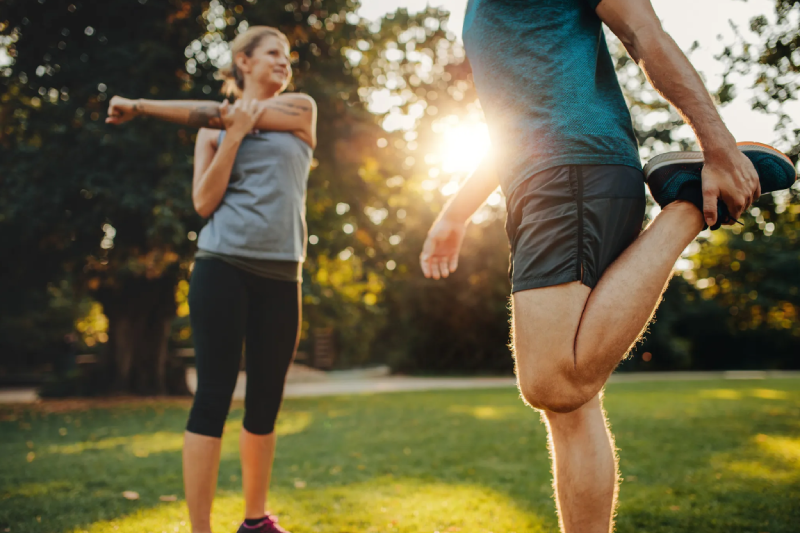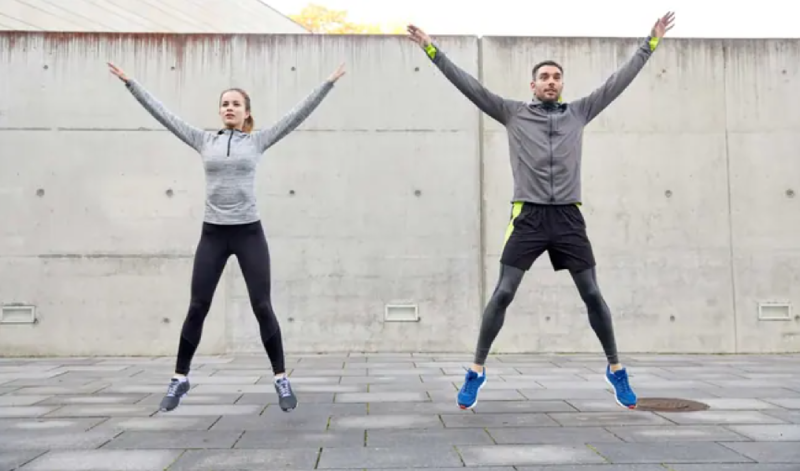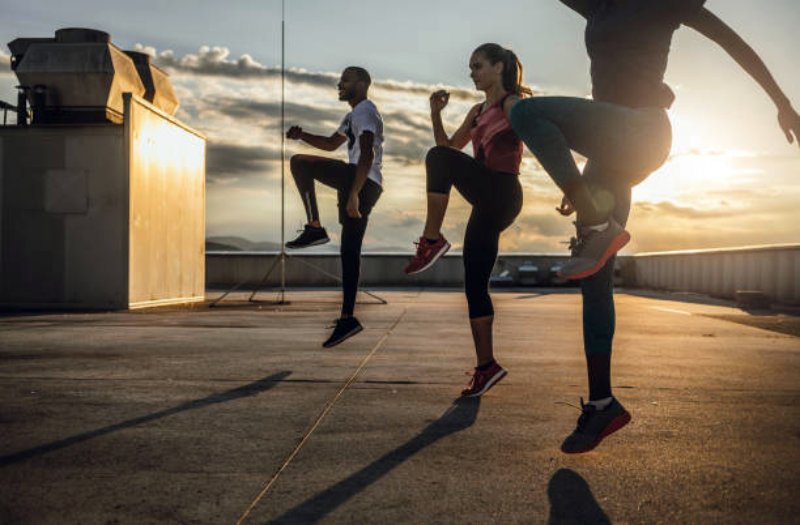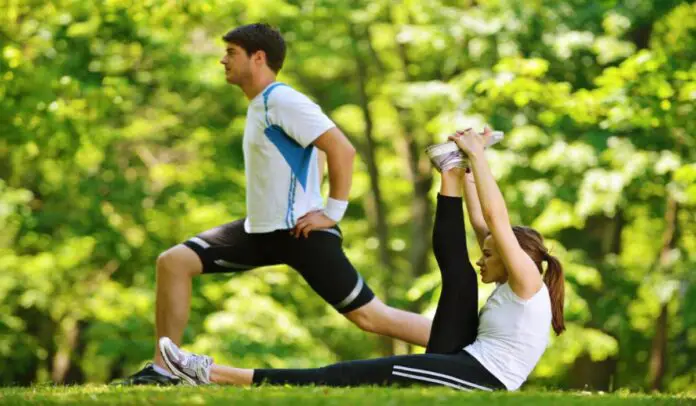Proper warm-up and cool-down are key elements of an effective exercise routine and significantly impact overall physical health.
First, proper warm-up prepares the muscles and joints for exercise. Light aerobic exercises increase joint and muscle flexibility, accelerate blood circulation and raise body temperature.
This allows the muscles to become more flexible, reducing the risk of injury and improving performance.
Proper cooling prepares the body to relax after exercise and return to normal activity level. Light aerobic exercises and stretching performed at a slow pace reduce the heart rate and gradually return the body temperature to normal.
This regulates blood flow, reduces accumulated lactic acid in the muscles and promotes muscle recovery.
Proper cooling provides relief after exercise by reducing the risk of excessive fatigue, muscle pain and injury.
Proper warm-up and cool-down help optimize exercise results and long-term health benefits. Correct warm-up and cool-down performed regularly ensures the sustainability of the exercise program by increasing flexibility, endurance and overall performance.
This increases flexibility in muscles and joints while also improving overall body functions.
Therefore, implementing proper warm-up and cool-down routines before and after starting any exercise program is an important step in creating a healthy exercise habit.

What are the correct warm-up and cool-down exercises?
Proper warm-up and cool-down exercises are important to prepare muscles and promote post-exercise recovery. Here are some recommended exercises for both processes:
Correct Warm-up Exercises:
- Light Aerobic Exercises: Low-tempo aerobic exercises such as walking, jogging and cycling increase the heart rate, accelerate blood circulation and raise body temperature.
- Dynamic Stretching Movements: Dynamic stretching movements such as running in place, jumping jacks, and knee lifts increase flexibility by effectively warming up joints and muscles.
- Circular Movements of Joints : Rotating joints such as wrist, elbow, shoulder and knee in circular movements increases the range of motion of the joint and accelerates fluid circulation.
Correct Cooling Exercises:
- Slow Pace Aerobic Exercises: Similar to light aerobic exercises performed during the warm-up process, activities such as slow walking or cycling lower the heart rate and return body temperature to normal.
- Static Stretching: Static stretching movements after exercise stretch the muscles and increase flexibility by reducing muscle tension.
- Relaxing Positions on the Floor: Relaxation positions performed by lying on the floor after exercise relax the muscles, reduce stress and support recovery. Yoga poses such as Savasana or child’s pose can be used for this purpose.
It should not be forgotten that warm-up and cool-down exercises should be adapted according to the individual’s general health condition, planned exercise type and intensity.
Therefore, it may be helpful to seek guidance from a personal trainer or healthcare professional.

What are the benefits of proper warm-up and cool-down exercises?
Warming up before sports and training has many physical benefits. You must have heard many times that it is necessary to cool down the body at the end of the workout.
Let’s briefly summarize the physical benefits of warming up and cooling down before exercise as follows:
Benefits of Proper Warm-Up Exercises:
- Muscle and Joint Preparation: Warm-up exercises effectively prepare muscles and joints. This increases muscle flexibility, improves joint range of motion and reduces the risk of injury.
- Increasing Blood Circulation: Warming up with light aerobic exercises accelerates blood circulation. This allows more oxygen and nutrients to be transported to the muscles, improving performance.
- Raising Body Temperature : A good warm-up increases body temperature. Warm muscles are more flexible and durable, which supports more effective performance during exercise.
Benefits of Proper Cooling Exercises:
- Reducing Muscle Tension: Cooling exercises reduce muscle tension that occurs after exercise. This helps clear lactic acid and other waste products that accumulate in the muscles.
- Slowing Heart Rate: Cooling down with slow-paced aerobic exercises lowers heart rate. This relaxes the heart and circulatory system and accelerates the transition to a resting state.
- Increasing Flexibility: Static stretching movements increase flexibility by stretching the muscles after exercise. This reduces the risk of future injury and ensures that muscles remain more flexible in the long term.
- Mood Improvement: Relaxing activities during cooling down improve mood by increasing endorphin secretion. This is important for post-exercise relaxation and stress reduction.




